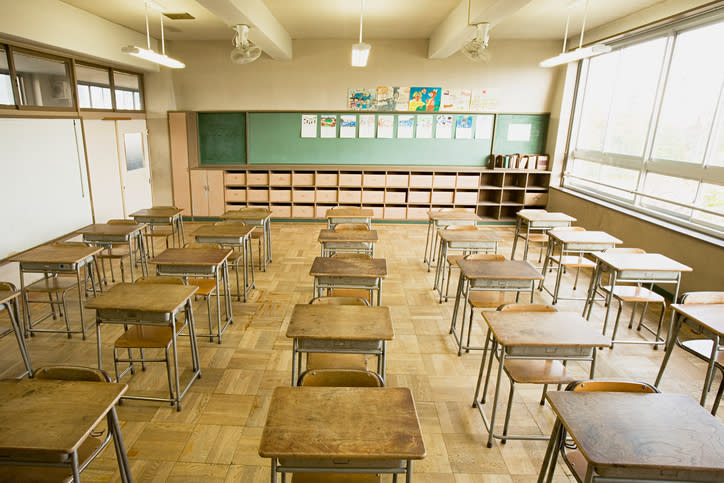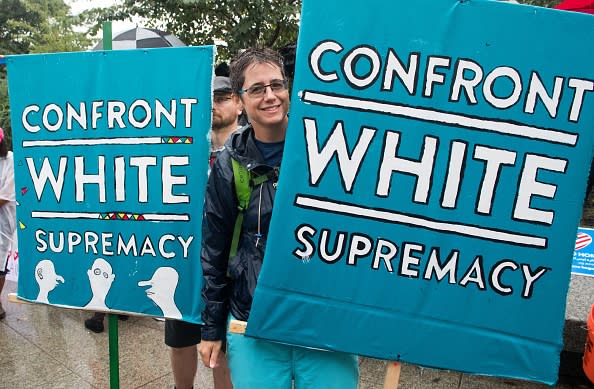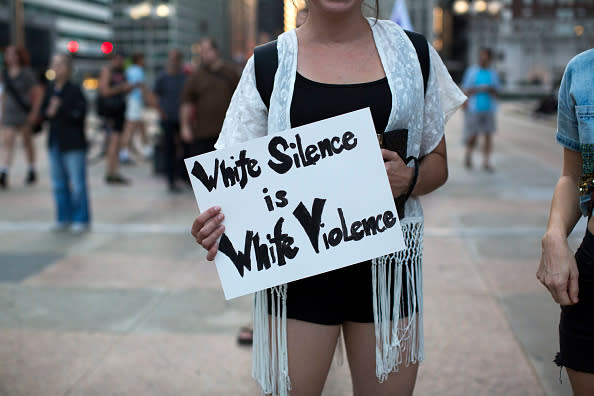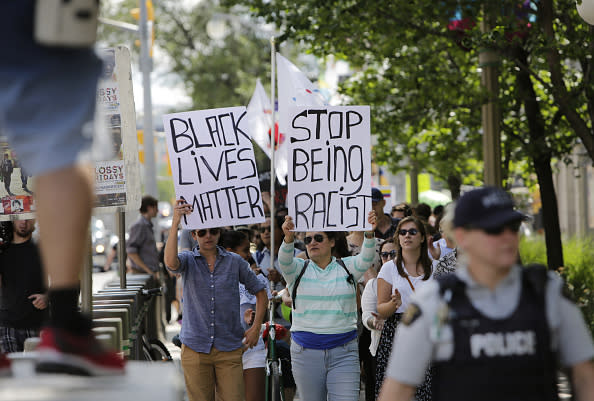As students head back to school, teachers must commit to teaching anti-racism in their classrooms
Alexis Morin is the co-founder and executive director of Students for Education Reform.
When one of the white supremacist protesters who participated in the deadly Unite the Right Rally in Charlottesville was exposed online, I recognized his name. We graduated together in 2008 from Algonquin Regional High School in suburban Massachusetts. It is back-to-school season, and students are beginning new classes while undocumented immigrant youth are losing DACA, making them vulnerable to deportation; while President Donald Trump has pardoned Joe Arpaio, who described a jail he ran as a “concentration camp”; while hundreds of armed neo-Confederate Nazis carried torches, chanted “Jews Will Not Replace Us,” and tragically mowed down protesters in a domestic terrorist attack; while our president defended those white supremacists.
Educators in my hometown — and in every school district — need to commit to anti-racist teaching.
There certainly weren’t any classes at our high school instructing students in Nazism or KKK beliefs — but there also weren’t any concerted efforts to teach anti-racism to the students in our virtually all-white suburban school.
And that massive failure explains, in large part, how we ended up here today, in 2017. I’m sure many of my classmates and community members felt shocked and embarrassed to see a graduate of our school holding a torch amidst fellow neo-Nazis and Klansmen. However, we must earnestly ask, are we really surprised? Yes, Massachusetts is considered a Northern liberal state, but that doesn’t mean we don’t have our own racist history to reckon with.
For the most part, there weren’t outward signs of bigotry in my community like we saw in Charlottesville. Colorblindness was considered polite, and most adults insisted that America was post-racial meritocracy. Hatred wasn’t explicitly taught, but it was transmitted in subtle ways that largely went unchecked, starting with the near complete exclusion of people of color and the poor.
I remember recently watching 12 Years A Slave with my family. While the credits rolled, my Dad, whom I love, spun his recliner toward me. The first words out of his mouth were: “That was an unfair portrayal of the slave owner. It wouldn’t have been in his economic self-interest to abuse his slaves.” The mental and physical abuse endured by enslaved African-Americans has been well documented, so I was dumbfounded by my father’s unwillingness to believe in the capacity of white slave owners to commit barbaric acts. This isn’t to say that my father supports slavery, but his reaction is emblematic of the racial divide in this country.
This attitude likely isn’t uncommon in our hometown, and I’d wager it’s not uncommon in most white towns across the country. That’s what happens when people are so separated from the pain of contemporary racial injustice, and so uneducated about our country’s racist history.
There’s no more clear place where my hometown has failed to confront racial injustice than in our schools.
Schools like my own high school have strong academic results, great test scores, and more — but as long as they remain complacent about racism and bias, generations of white students will perpetuate the status quo. We must actively work to interrupt racist beliefs, especially in predominantly white schools.
Schools that choose to be agnostic about racial injustice — both historical and in present day — create a hostile learning environment for students of color. In high school, it wasn’t uncommon to hear classmates casually stereotype and denigrate people of color, even within the earshot of teachers. A few of my classmates of color have described their time at our high school as toxic; our school was a place where they internalized racism about themselves, where they experienced everyone around them erasing their race.
Most tellingly, none of my high school friends who are people of color expressed surprise that a white supremacist emerged from our hometown.
Because our school took a passive approach to racial injustice, my white classmates and I graduated ignorant and insensitive to the realities of life for many fellow Americans — at the very moment when our country is becoming majority people of color. I graduated and went on to college, but I left unprepared to engage in a multi-racial, multi-ethnic society.
What would an anti-racist curriculum look like?
It would look like educating students about the harms of stereotypes, discrimination, and the insidious racial biases held by almost everyone. It would mean choosing to teach U.S. history accurately, and not skip over the horrific genocide, slavery, exclusion, internment, plunder, lynching, and mass incarceration perpetrated systematically by white Americans against people of color.
All too often, schools leave the ugly, racist parts of our history out, leaving students with an inaccurate understanding of the U.S.’s past and present. Educational institutions must do better to promote an honest picture of our common history so that we can eradicate injustice.
Since the Charlottesville riot, I’ve heard from teachers in my district who have tried to teach students about hate speech during this past year, only to be chastised by administrators and parents. Teachers shouldn’t have to look over their shoulder to teach students about the dangers of racism.
Every adult employed by our schools, from the leadership down, should work together each day to agitate white students to act on their unique responsibility to end white supremacy.
I don’t think our schools and our town actively encouraged my classmate to become a neo-Nazi. But we can’t say with integrity that we did all we could to prevent it.






